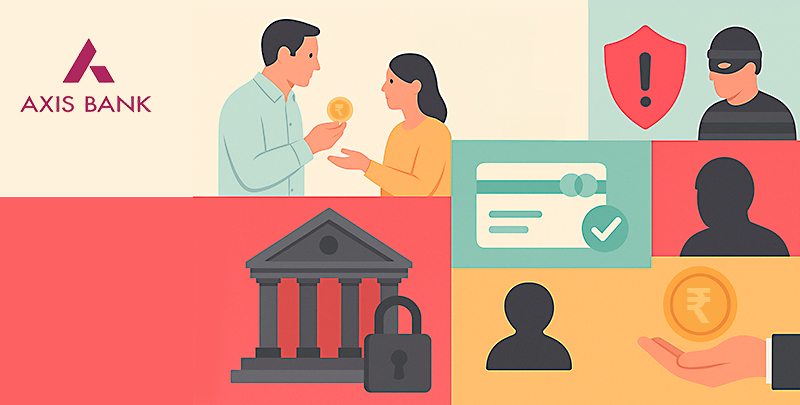- Accounts
- Deposits
- Cards
- Forex
Send Money AbroadSend Money to India
- Loans
24x7 Loan
- Investments
- Insurance
General InsuranceHealth Insurance
- Payments
- Open digital A/C
Explore 250+ banking services on Axis Mobile App
Scan to Download
- Current Account
- Pay
- Collect
- Trade
Services
Solution for Exporters
- Debt & Working Capital
24x7 Loans
For MSMEs with turnover up to ₹30 Cr
- Treasury
- Transact Digitally
- Home
- Blogs
- Financial Planning Guide
- Raising twins? Here’s how to afford their college dreams

Financial Planning
The ultimate guide to education planning for parents of twins
Key takeaways
- Higher education costs are rising—twins mean double the tuition burden.
- Start SIPs early to build a strong education fund over time.
- Protect your plan with term insurance and a solid emergency fund.
If you’re a parent of twins, first — hats off to you.
Double the giggles, double the milestones… and yes, double the financial planning.
And when it comes to higher education?
That’s where the "double" part hits hardest.
Now imagine this: both your kids cracking college entrance exams the same year. That means two tuition fees, two hostel bills, two laptops, two sets of textbooks, and maybe even two international education dreams.
Higher education in India—or abroad—isn’t getting cheaper. The earlier you start preparing, the better your chances of staying stress-free when the admission letters arrive.
Here’s how to plan smartly and systematically for your twins’ higher education journey.
Step 1: First, get real about the numbers
Let’s start with the uncomfortable but necessary bit:
How much are we talking about?
Here’s a rough estimate of current higher education costs in India:
| Course | Cost Today (per child) | For Twins (x2) |
|---|---|---|
| Engineering (BTech) | ₹10-20 lakh | ₹20-40 lakh |
| Medical (MBBS) | ₹50-80 lakh | ₹1-1.6 crore |
| MBA (Top Indian B-Schools) | ₹20-30 lakh | ₹40-60 lakh |
| Studying Abroad (USA/UK) | ₹40-80 lakh | ₹80 lakh-1.6 crore |
Now here’s the kicker:
By the time your twins hit college (say, 10-15 years from now), fees will double (thanks to 6-8% annual education inflation).
So if engineering costs ₹20 lakh today, in 15 years it could be ₹40 lakh per child. Meaning ₹80 lakh for both your twins.
Take a breath. It's a big number, but knowing your target makes everything else easier.
Step 2: Set your timeline and goal
Let’s assume:
- Your twins are 5 years old today
- They’ll start higher studies at age 18 So, you have 13 years to save.
If your target is ₹80 lakh (₹40 lakh per child for engineering), here’s the savings math:
| Goal amount (13 years later) | Monthly saving needed (assuming 10% return) |
|---|---|
| ₹50 lakh (lower-cost option) | ₹15,800 per month |
| ₹80 lakh (mid-range) | ₹25,200 per month |
| ₹1 crore (high-end private/foreign study) | ₹31,500 per month |
So, saving around ₹25,000 per month steadily for 13 years can get you to ₹80 lakh.
See? Big goal, but broken down, it becomes a monthly task.
Now the game is: how do we hit that number smartly?
Step 3: Pick the right investment tools
Here’s where a lot of parents go wrong — they stick to traditional investment products like Fixed Deposits (FDs). But with education inflation at 6-8% per year, and FDs giving 6-7% returns, you’re just running on a treadmill, not moving ahead.
You need to grow your savings at 9-12% annually to outpace costs.
Here’s a simple table to show you where to park your money based on your timeline:
| Saving Option | Returns | Risk | Best For |
|---|---|---|---|
| Fixed Deposits (FDs) | Low | Low | Short-term (1-3 years) |
| Recurring Deposits (RDs) | Low | Low | 1-3 years of saving discipline |
| Debt Mutual Funds | Low | Low-Moderate | 3-5 year goals |
| Hybrid/Balanced Funds | Moderate | Moderate | 5-7 years goals |
| Equity Mutual Funds | High | High (short term) but stable (long term) | 10+ years goals |
For twins' education (10-15 years goal):
Best bet = Start with Equity Mutual Funds SIPs for the first 8-10 years, then slowly move to safer options like Debt Funds or FDs as you near the goal.
This strategy gives your money time to grow early on and protects it closer to the finish line.
Step 4: Automate & make it “twin-proof”
You’ve got double the expenses coming, so your savings need to be double-proofed too.
Here’s how:
- Set up an automatic SIP (Systematic Investment Plan) every month
- Open a separate account or folio for the twins' education fund (so you don’t mix it up with vacations or car funds)
- Review your savings once a year — increase your SIP by 5-10% annually if possible (this little trick makes a big difference over 10 years)
This way, you’re not relying on willpower — it runs on autopilot, even when life gets busy (which, let’s be honest, it always does when you’re parenting twins!).
Step 5: Don’t forget insurance (it’s your backup plan)
If you’re the primary earning parent, protecting your kids’ educational dreams means having a term insurance plan.
The sum insured should ideally cover:
- Outstanding loans
- Day-to-day family expenses for a few years
- Both children’s education costs
That’s why a term cover of ₹1–2 crore isn’t overkill—it’s responsible planning.
Also consider:
- Health insurance (to avoid dipping into savings)
- A separate emergency fund (so your education fund stays untouched)
Step 6: If studying abroad is on the cards
Start even earlier. Costs for studying abroad include tuition + living + travel + insurance. Add forex rate fluctuations, and it’s easy to overshoot.
What helps:
- Open an LRS-compliant investment account for foreign education
- Explore education-specific mutual funds and global ETFs
- Look into education loans for part-funding—but don’t rely on them 100%
- Encourage your kids to build a strong profile for scholarships or assistantships
Let’s be practical:
If both your twins end up choosing expensive courses (like medical, MBA, or foreign studies), you may still need an Education Loan to top up your savings.
And that’s okay.
But your goal is to:
- Save at least 50-70% of the expected cost yourself
- Use loans only for the remaining 30-50%
That way, your twins graduate with minimal debt stress, and you won’t have to mortgage your house to pay their fees.
What if you can’t save ₹35K/month right now?
That’s okay. Start with what you can—₹5K, ₹10K, whatever fits—and increase it every year as your income grows. This is called a step-up SIP.
Even a 10% increase per year can make a huge difference:
| Year | Monthly SIP (starting ₹10K, +10% yearly) |
|---|---|
| Year 1 | ₹10,000 |
| Year 5 | ₹14,641 |
| Year 10 | ₹23,579 |
| Year 15 | ₹38,040 |
This strategy keeps pace with your career while still building a solid corpus.
Final thoughts: Start today, stay steady
Here’s the good news:
Even if ₹80 lakh sounds terrifying today, starting early and steadily makes it manageable.
The real danger isn’t high fees — it’s starting late or saving irregularly.
So, if your twins are still in primary or middle school, this is your golden window. Because every year you wait? The monthly savings target gets bigger.
So:
- Start small if needed — even ₹10,000/month is better than zero
- Scale up as your income grows
- Keep your eyes on the twin prize: seeing them both graduate debt-free and with bright futures
Because someday, when both your kids walk up on stage in their graduation gowns? All those SIPs, skipped impulse buys, and smart savings? Totally worth it.
Disclaimer: This article is intended solely for
informational purposes. The views expressed in this article are personal. Axis
Bank and/or the author shall not be liable for any direct or indirect loss or
liability incurred by the reader arising from reliance on the content herein.
Readers are advised to consult a qualified financial advisor before making any
financial decisions. Axis Bank does not endorse or guarantee the accuracy of
any third-party content or links included in this article.
Mutual Fund investments are subject to market
risk. Please read all scheme-related documents carefully. Axis Bank Ltd. is
acting as an AMFI registered MF Distributor (ARN code: ARN-0019). Any purchase
of Mutual Funds by Axis Bank’s customer(s) is purely voluntary and not linked
to availment of any other facility from the Bank. This content is for
informational purposes only and does not constitute investment advice. Past
performance is not indicative of future returns. Readers are advised to consult
a qualified financial advisor before making any investment decisions. Terms and
Conditions apply.
Table of Contents
Related Services
Learning Hub
Look through our knowledge section for helpful blogs and articles.













